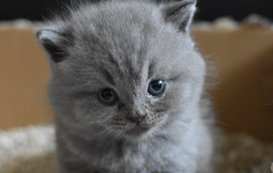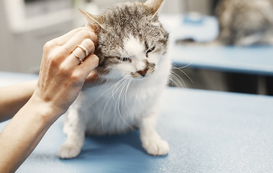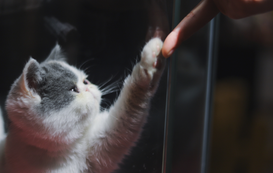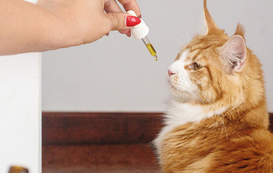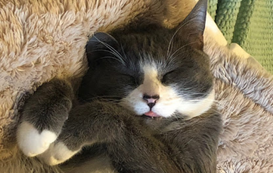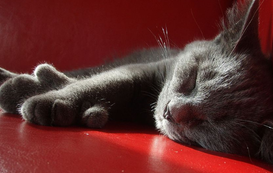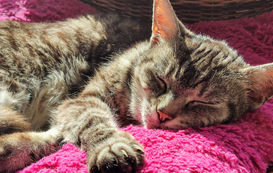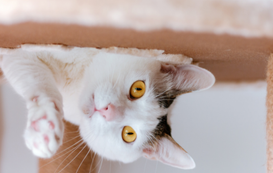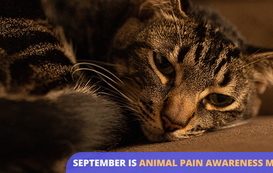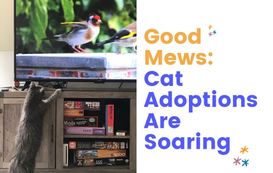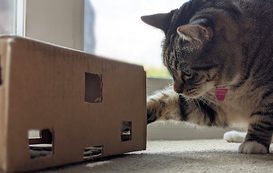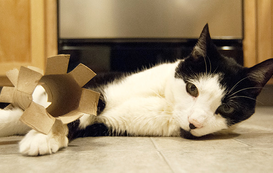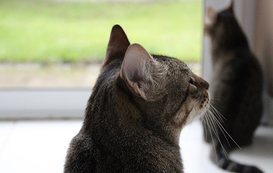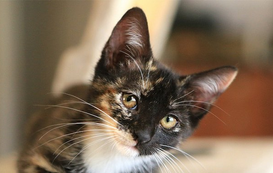Popular posts
Talking to your cat: Crazy or Constructive?
For many cat owners, talking to their cat is just a regular part of daily life. We may not be able to understand or communicate specific words with our furry friends, but many cat lovers suggest that talking with your cat may actually be good for your relationship with them, even if they don’t understand the particulars of what you’re saying.
It may also have a positive impact on us too, the cat parents! While the positive effects of owning a pet at all are undeniable at this point, many also posit that talking to your cat can benefit owners greatly. There’s certainly something therapeutic about owning a cat and cuddling with them on especially hard days, but talking to them with either a human or a cat-like voice can be equally emotionally supportive, even if just for a few laughs.
Today we’ll look at the benefits of both talking to your cats like a human and responding to them with cat-like sounds.
The ways and benefits of talking to your cats!
While there are a variety of ways people talk to their cats, there really isn’t anything inherently negative about the practice. Doing it at certain times can create certain learned behaviors, positive or negative, but this simply requires care and tact when talking with your cats. For example, avoid responding to their meows and purrs in the middle of the night to help discourage them from keeping you up, and they’ll eventually learn that their attempts at that time of night are futile.
Speaking to your cat in a human voice.
Talking to cats in a human voice is equally common to talking to them in a cat voice, in general, and it’s certainly more common with other common housepets. It doesn’t make any particular difference how a person talks to their cat, and there isn’t really enough research about the psychology of cats to make any specific claims. In a certain research study, it was found that cat owners who were more educated tended to speak to their cats in a normal, human voice. Still, it’s correlative and doesn’t mean very much until the subject is further researched.
Talking to your cat in a human voice also has the potential to be therapeutic for you! They may not respond as frequently as when talking to them using cat sounds, but you can talk to them all day and they’ll simply appreciate the attention.
Speaking to your cat in a cat-like voice.
Many owners, whether they realize it or not, speak to their cats in cat-like voices, or using meows, purrs, and other cat sounds. Cat parents seem to like trying to mimic and, perhaps, communicate with their fluffy friends. And many cats, especially those more vocal, will respond and even have entire conversations with their owners! While these don’t guarantee we can understand what our furballs mean, they do often guarantee a good time and an ongoing relationship being built between you both.
This is particularly interesting, especially in comparison with the cat’s canine counterparts, who are often spoken to in human voices and words, and are rarely barked, growled, or panted at. Cats, on the other hand, find favor in their masters with sheer cuteness and an array of expressive sounds - and hopefully someday our world’s experts will learn more about what those sounds mean! For now, it’s up to us to use our best judgment with our cats.
Talking to your cat constructively!
No matter how you speak to your cat, one thing is sure: your relationship with your kitty companion will be the biggest indicator of how they behave, and this relationship is the single biggest goal in any attempts to talk to your cat. Although there isn’t nearly enough research out there to establish any certainties about talking to cats, we know it can create a special bond between cats and owners, which can be mutually beneficial.
This bond is the primary goal of talking to your cats at all, so craft it the way you think is best, and ask your vet for ideas and expert opinions. And in the meantime, pay attention to how your cat is talking to you.
Here are a few tips for talking to your cat in a constructive way!
Follow your cat’s lead.
When trying to develop a way to talk to your cats, you can let them do the heavy-lifting (figuratively, of course). Most cats who are already vocal about certain things will let you know when they need or want something. Follow your cat’s lead and respond when they speak to you, and they’ll get in the habit of having these fun “conversations.”
Usually when cats meow at you or purr, they’re either trying to tell you something or they’re trying to get something out of you - and maybe even both at times! In any case, while you take the time to try to understand their needs and reason for speaking up, use the opportunity to goof around and respond to them. Especially if they’re kittens, you’ll start to teach them two things by responding to their vocalizations: 1. that you’ll be there to respond when they need you and 2. that you enjoy your time together enough to dignify them with a response.
Cats, unlike their canine counterparts who only use around 10, use over 100 different expressive sounds to convey their points. This emphasis on vocalization gives us the opportunity to begin to learn our cats’ languages by following their lead, and their tones will teach us a lot about what they need, if we care to listen.
Cats speak in and understand tones.
Again, cats can use over 100 different expressive tones to explain what they mean. While we’d be hard-pressed to say we know what they all mean and can identify them, there’s something to be said for any cat owner trying to better understand their cat! Cats use and respond to tones, more than they respond to words or even voices. This means that no matter what you’re saying to them, using the same tone of voice to convey the same meaning will go a long way in teaching them how to talk with you.
When disciplining, they notice (and get scared!) an owner’s yelling - this is why it’s best not to yell, but rather to use a tone that conveys teaching, especially knowing that cats have extremely sensitive hearing. Startling them isn’t a great way to avoid bad behavior in the future, it’s only good at damaging your relationship with your cat.
With the above example in mind, we can apply the principle to almost anything. Our tone tells our cats a lot about what we mean and what we expect of them, and teaching them most of all that they are loved is, again, the first and foremost benefit of talking to them at all.
Use gestures and play alongside your voice with your cat.
The aforementioned study also noted that cats responded well to visual body language, like gestures and pointing. You can perform these gestures alongside your talking conversations with your cat, and it will help to reinforce what certain things you say mean.
Remember that cats rely primarily on their sense of smell, rather than vision, when within about a foot of their faces. This means that when using gestures to talk to them, it’s best to do so at a distance, and even on their level so you can keep their attention.
Keep learning about your cat and others!
There are many other resources online that offer perspectives on talking to your cat, so it’s best practice in general to stay updated on the cat world and new ideas! The Meowtel blog is always putting out new material, and you can find other experts and voices on cat behavior all over the internet. But that isn’t the only way to learn about cats!
Asking others how they talk to their cat or what their habits are with their cuddly companion is a great way to learn more about cats and owners in general. Ask your Meowtel sitter about their cats, or your family and friends. While we all have to trust our best judgment and the professional opinions of our vet and experts in the field, it’s helpful to learn from other owners too.
In any case, keep your friendship with your cat your first priority when talking with them, and the outcome will be positive no matter what. Meow!








